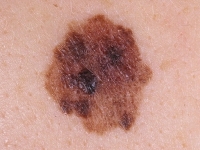Hyperopia: How to avoid age-related eye problems
 Reducing the sharpness of view when viewing close objects – the first signs of farsightedness. Age farsightedness or presbyopia develops in most cases with age, when the eye lens loses its elasticity and the eye muscles, which are responsible for focusing, weaken. However, farsightedness can develop not only in old age, but also after 30-35 years, if a person spends too much time at the computer and other gadgets, constantly over-exerts his eyesight, malnourishes himself, etc.Therefore, it is important to know preventive measures to help your eyesight stay clear as long as possible and your eyes healthy. Congenital or acquired hyperopia (hypermetropia) also exists under the influence of a number of factors.
Reducing the sharpness of view when viewing close objects – the first signs of farsightedness. Age farsightedness or presbyopia develops in most cases with age, when the eye lens loses its elasticity and the eye muscles, which are responsible for focusing, weaken. However, farsightedness can develop not only in old age, but also after 30-35 years, if a person spends too much time at the computer and other gadgets, constantly over-exerts his eyesight, malnourishes himself, etc.Therefore, it is important to know preventive measures to help your eyesight stay clear as long as possible and your eyes healthy. Congenital or acquired hyperopia (hypermetropia) also exists under the influence of a number of factors.
How to suspect hyperopia: symptoms of presbyopia
Age presbyopia begins to make itself felt at the age of 45-50 years. It becomes more and more difficult for a person to look at small objects and fonts close by: having moved the book to the arm’s length, the text becomes more visible and the person can read it. If no action is taken, the vision continues to deteriorate and the person needs more and more distance from the eye level to examine the subject or read the text.
Attempts to read the text “floated” and look at fuzzy objects lead to rapid overstrain and eye strain. As a result, eye pain, headache, and dizziness join vision problems.
Other causes and factors of farsightedness
When farsightedness disrupts the quality of visual perception of objects that are close to the eye distance: the focus of the image falls behind the eye retina, and not on it. Congenital hyperopia may result from the structure of the eyeball (reduction in its size), as well as a decrease in the optical power of the cornea. Often in people with congenital farsightedness, both factors coincide. The anomaly of the eyeball is inherited, and the anomalies of the optical power of the cornea occur in a child with intrauterine growth disorders.
Also, with quite young people, with constant eye strain – working with small fonts, devices, and even in poor light, at an inconvenient distance from your eyes, hyperopia can begin to develop more rapidly. Therefore, when the first visual impairment and decrease the clarity of the “pictures” is important to consult an ophthalmologist and correct vision.
Ways to prevent the development of hyperopia
For the prevention of early farsightedness, it is important to observe not only hygienic eye care measures for children, but also moderation of visual loads, perform special exercises for the eyes, and ensure that the child’s workplace is gently and evenly lit. In adulthood, it is also important not to overstrain your eyes, take breaks in work, eat foods that are good for your eyes, such as blueberries, spinach, eggs, broccoli, carrots, and oily fish. You should also try to avoid injury to the eyes, infectious and inflammatory diseases, as organs of sight – and common.
It is important to treat all diseases in time and prevent them from becoming chronic. Unfortunately, to avoid age-related deterioration of the sharpness of view is completely impossible. Regular preventive examinations by a specialist eye test will help to diagnose visual impairment due to myopia and other ophthalmic diseases in a timely manner. And to avoid deterioration of the condition and the effects of presbyopia, glasses with “plus” lenses, which the specialist will select, will help.



